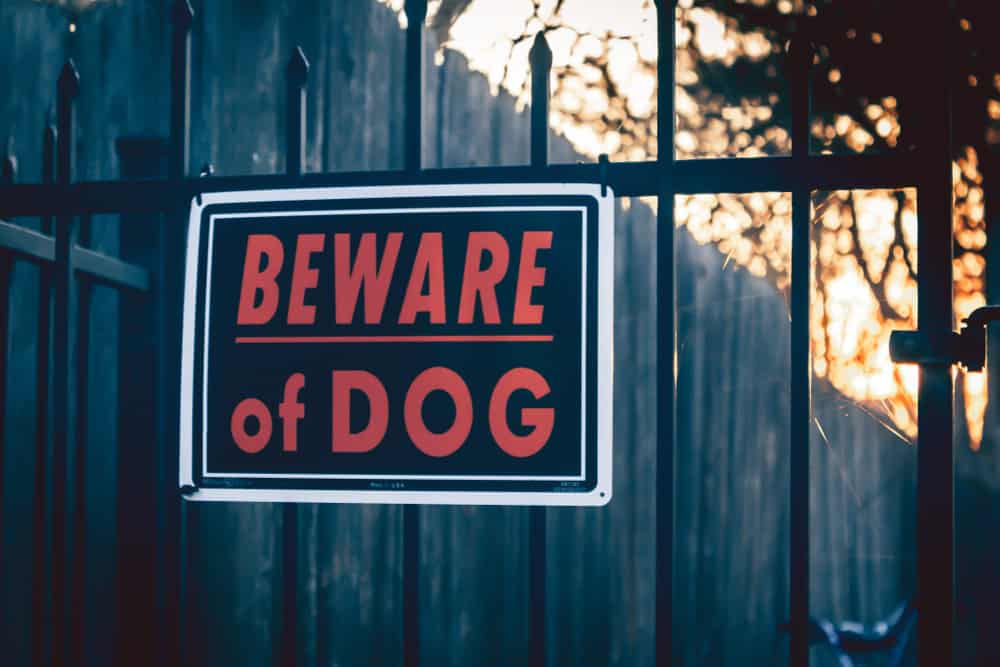“This post contains affiliate links, and I will be compensated if you make a purchase after clicking on my links.”
Pet dogs have become such a normal part of American life that most people consider them a part of the family. Most dogs are harmless, but at the end of the day, they are still animals with animal instincts. Dogs may bite when threatened, afraid, or excited.
Dogs often attack other dogs, but they may also attack humans. If you report a dog bite, you may be wondering what happens next. Understanding the process when a dog bite is reported is key to making the right decision to recover quickly.

When You Are Bitten by a Dog
If you are severely bitten by a dog, the first thing to do is call the police. The police will call for medical help if you need it. But even if the bite was minor, you should still get checked out by a doctor. The dog could have rabies and pass the infection on to you. You may not experience any symptoms of this infection right away, so it pays to get medical attention sooner rather than later.
While you wait for the police, take pictures of the scene. Photograph your injuries, the scene, and the dog, if possible. Did the dog escape from an unlocked fence? Take a photo of the open fence. Was the owner walking the dog off the leash? Take a photo of the dog not wearing a leash or harness.
Interview any witnesses at the scene. If possible, videotape their statements to ensure that they are accurate. Get their contact information—phone numbers, addresses, and email addresses—-so that you can call them later if you need more information or a court witness.
Get the owner’s information. If the owner is present, get their name, address, and phone number. (If they’re not willing to share their personal info, they’ll certainly provide it to the police). You may also want to have your doctor contact the dog’s vet to determine if he was up to date on his shots, namely rabies, and tetanus. So, get the other dog’s vet information too.
What Happens to the Dog?
After a dog bite incident, the police will likely call Animal Control to assess the dog. Authorities may quarantine the dog at the owner’s home, checking to see if he shows signs of rabies infection. Authorities may also take the dog into custody at an animal shelter if he is considered a threat to the public.
In the rarest of cases, the dog may be put to sleep. This normally occurs if there has been a history of attacks by this dog, if the dog is a threat to the public, or if the dog has killed a dog or human.
Some states are required to euthanize the dog if it is found to have rabies. The determination of whether to euthanize the animal is made at the discretion of the local animal control and only after a full investigation on the part of the agency. If the owners are found not to have vaccinated the dog against rabies, they can be held legally responsible for the accident and the dog’s behavior.
Final Thoughts
If you have been bitten by a dog, you may be suffering painful and debilitating injuries. Dog owners must ensure that their dog does not attack people or other dogs. By law, they are required to do this by leashing the dog, keeping it locked in the home or yard, and regularly checking its health.
Suffering alone after a dog bite can be stressful. You need a dog bite attorney to defend you and help you navigate dog bite laws in your state. If your injuries were severe, an attorney could also help you secure fair monetary compensation for your injuries and pain, sometimes without even taking the case to court.
About the Author:

With a law degree under his belt and years of experience, Mark Scott set off to make the law more accessible to all. He decided to help people lost in the maze of legal terminology to find their way. Mark writes clear and concise pieces and gives simple advice that is easy to follow. On account of positive feedback from readers, he decided to dedicate more of his time to this goal and became a legal columnist. In his writings, Mark covers a wide array of topics, like how to seek legal counsel, or how to deal with different procedures. Furthermore, he directs his readers toward other trustworthy resources for more in-depth information.


















